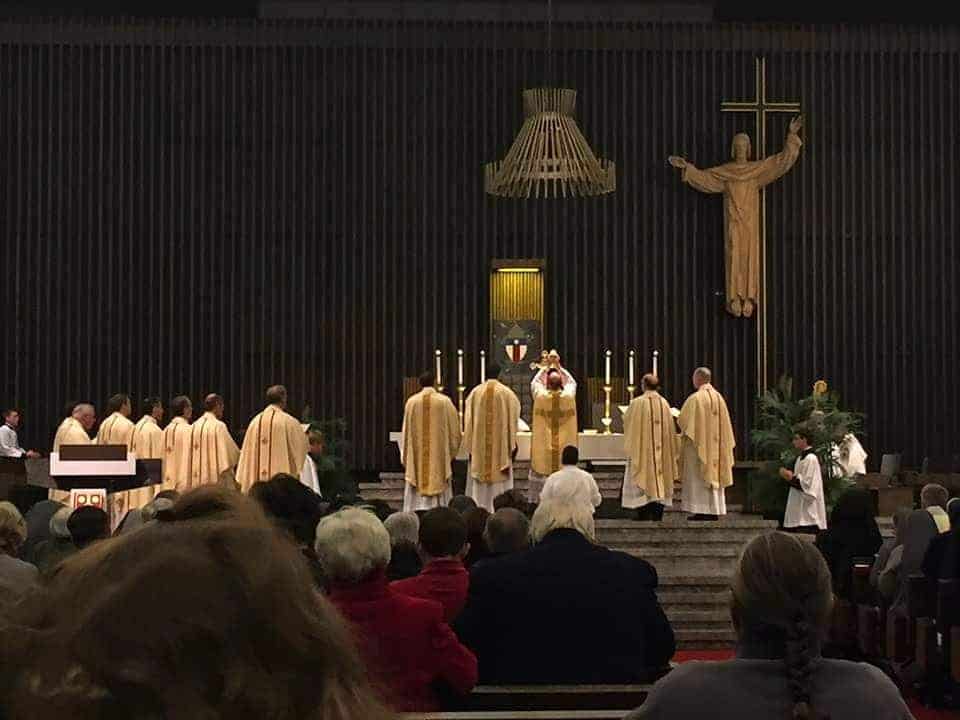In a recent column, Lincoln Bishop James Conley offered a short and eloquent explanation of the history and symbolism behind our liturgical traditions. During Advent, priests at Lincoln’s Cathedral of the Risen Christ will celebrate every Mass ad orientem. He explains why:
The Mass is rich with symbolism. The vestments of the priest remind us of the dignity of Christ the King. We strike our breasts, and bow our heads, and bend our knees to remember our sinfulness, God’s mercy, and his glory. In the Mass, the ways we stand, and sit, and kneel, remind us of God’s eternal plan for us.
Since ancient times, Christians have faced the east during the Holy Sacrifice of the Mass to remember to keep watch for Christ. Together, the priest and the people faced the east, waiting and watching for Christ. Even in Churches that did not face the east, the priest and people stood together in the Mass, gazing at Christ on the crucifix, on the altar, and in the tabernacle, to recall the importance of watching for his return. The symbolism of the priest and people facing ad orientem—to the east—is an ancient reminder of the coming of Christ. …
But the symbolism of facing together, and awaiting Christ, is rich, time-honored and important. Especially during Advent, as we await the coming of the Lord, facing the east together—even symbolically facing Christ together at the altar and on the crucifix—is a powerful witness to Christ’s imminent return. Today, at a time when it is easy to forget that Christ is coming—and easy to be complacent in our spiritual lives and in the work of evangelization—we need reminders that Christ will come.
Progress.



